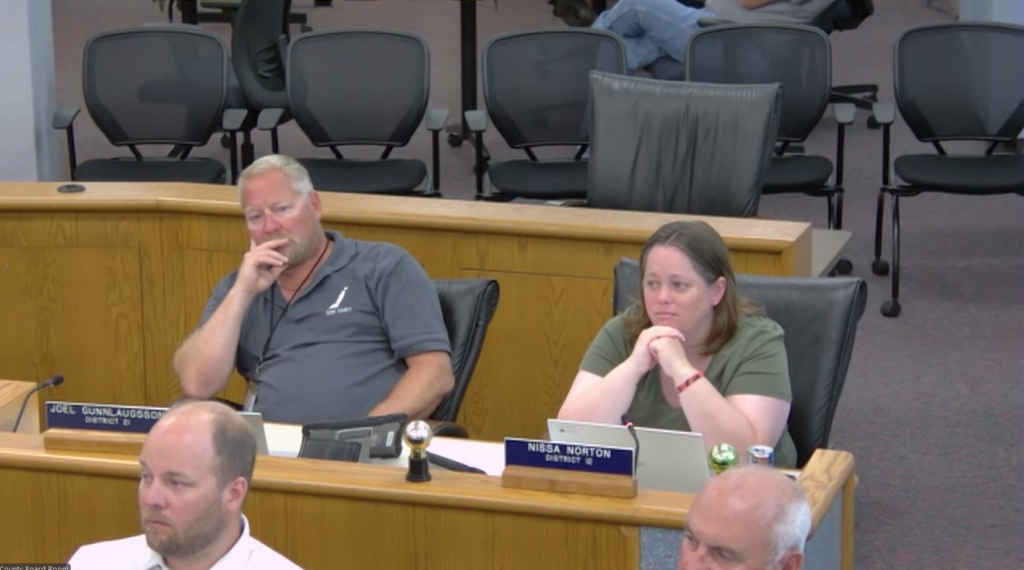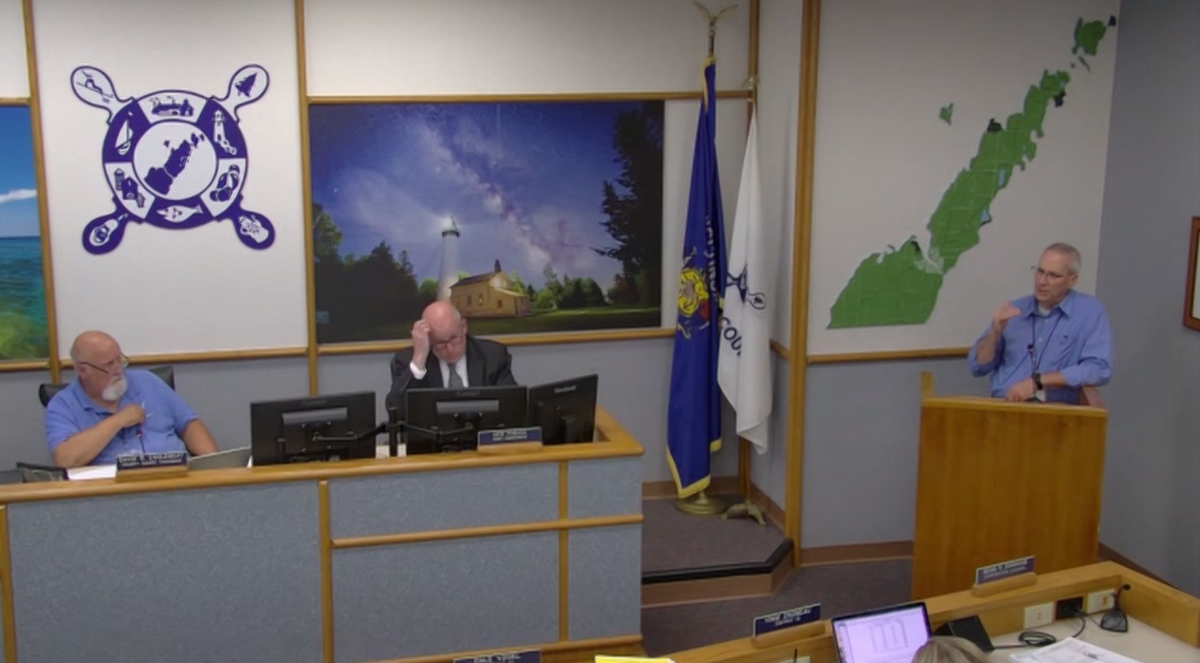The Door County Board of Supervisors on Tuesday approved a request to enter into another opioid settlement and allocated a portion of the money the county has already received toward operating a local sober living facility. The county began receiving opioid settlement funds in 2022.
Door County has received $303,499 of opioid settlement funds in the past few years. The county Health and Human Services Board requested $100,000 of those funds to be allocated to the local sober living facility in its first year. Supervisors unanimously approved the request.
The County Board also unanimously voted to enter into the most recent settlement agreement related to the opioid epidemic. The suit is between Kroger Co. and at least 66 other Wisconsin counties. It is one of many U.S. Department of Justice-led civil suits between hundreds of U.S. municipalities and manufacturers and distributors of prescription opioid medications like OxyContin.
The premise of the lawsuits is that defendants contributed to the opioid addiction crisis ravaging communities across the country by irresponsibly distributing and overselling highly addictive prescription painkillers and marketing them as non-habit forming.
Local governments and taxpayers have been footing the bill for the fallout, whether it is through residents’ increased interaction with law enforcement and the criminal justice system, public health services, emergency and healthcare resources, or treatment and prevention services.
The plaintiffs in these suits seek to recoup some of that money and remediate the effects of the opioid epidemic, county administrator Ken Pabich said during board discussion of the settlements.
Health and Human Services Department director Joe Krebsbach has said it before, and he said it again at July’s board meeting: “Door County, like most things…we’re a little behind times. But unfortunately we’re there, we’re catching up.”
“That opiate epidemic that’s hit the rest of the state and the country? It’s hitting us now,” he added.
The number of children in foster care has doubled in the last two years, according to Krebsbach, and almost all of those cases are tied to parents with substance use disorder. There is no shortage of people seeking HHS services related to substance use disorder, he added, and the department is struggling to keep up.
“Sober living will be a component to help us dig our way out of it,” he said.
How much and how accountable
Currently, already agreed upon settlements are sending roughly $1.2 million Door County’s way over the next several years, according to county treasurer Ryan Schley.
In Krebsbach’s presentation to the County Board, he gave a breakdown of the payment schedule. Between 2025 and 2035, Door County is slated to receive between $49,069 and $85,292 annually, according to his report.
Legislation signed by Governor Tony Evers in 2021 determined the formula for how opioid settlement funds are dispersed: 30 percent goes to the state and is managed by Wisconsin’s Department of Health Services; 70 percent is dispersed, based on community size, to local governments.
The board approved entering the most recent settlement with Kroger, Co., in which 20 percent of the amount each local government receives must go into escrow to cover attorney and legal fees, Schley said. This is a common requirement in most of the settlement cases.
Every state is different in the way settlement funds are legislated and dispersed, and transparency and accountability mechanisms vary widely. Wisconsin’s legislation pertaining to these funds is very specific about the way they are to be invested by communities.

“They are to remediate the effects of the opioid epidemic,” Schley said.
The funds are not for general use; they are solely for rectifying past or current issues related to opioid use and addiction , according to Wisconsin’s settlement agreement.
Governments also must keep these funds in a separate account from other government funds, they must submit an annual report of how funds were used, and they cannot use the funds to substitute for previously budgeted money received from other sources, according to the state.
The Door County government is serious about making sure it follows the intended use of opioid settlement funds, according to District 21 supervisor Joel Gunnlaugsson, who is a member of the county finance committee. Gunnlaugsson represents parts of Liberty Grove and all of Washington Island.
The largest earmarked expense for funds received so far is HHS’s sober living facility project, according to Schley. The Door County Sheriff’s Office has also asked for funds to install a scanning machine for the entrance of the justice building to detect whether persons are smuggling drugs into the jail, Schley reported.
That request is still undergoing discussion and review, Pabich said in a phone conversation following the board meeting.
As far as a mechanism for deciding how funds are dispersed, Pabich said the requirements are so specific that almost all of the uses will fall under HHS’s umbrella more than any other department. If individual municipalities within Door County have needs or issues related to opioid use, they can reach out to HHS directly to find out how the county can help, he said, but municipal governments will not be able to apply the funds to their own programs or treatment. They must be used for county-administered services.
‘We’re talking about people’
Krebsbach also updated the board on the status of the sober living facility project. CORE Treatment Services, Inc., the company HHS has contracted with to open and operate the sober living facility, is negotiating a lease with a local landlord and will be entity renting the space in the agreement, he reported.
For now, the facility will house only women, because that is the population where HHS is seeing the most need, Kresbach said. It will accommodate four to six clients. Clients will receive treatment and rehabilitation services through the county’s Comprehensive Community Services program, as well as services through CORE.
Once a resident of the sober living facility completes 90-120 days of treatment, they should be stable enough to work, Krebsbach said, and they will be expected to pay back into the program, whether through rent, work hours or paying for services.
As far as long-term budget planning and agreements with CORE and the landlord, Krebsbach is cautious, he said. HHS usually only contracts with vendors like CORE for one year, he said.
“I think we’re going to experiment with this,” he added, acknowledging the unknowns. “I’m not sure we’d want to go more than two years in case there’s a problem with the way the house operates or the vendor.”
During board discussion about the HHS board’s request for $100,000 of opioid settlement funds to be designated to the sober living facility project, Krebsbach clarified why the numbers seem hard to understand.

According to Krebsbach, HHS has already spent $15,000 on services related to substance use disorder this year. It is projected those service costs will double by the end of 2024, he said.
The projected annual expense for the first year of operations in a four- to six-bed, female-only sober living facility is based on a daily per-resident rate, he said. That annual expense, as a “most expensive case scenario” is about $178,000, Krebsbach added.
County Board vice chairperson Todd Thayse commented that he did not understand how it made sense for the county to offset $30,000 with $178,000. Thayse is the District 2 supervisor representing parts of the towns of Brussels and Forestville and the Village of Forestville.
Krebsbach agreed that the numbers do not add up the way they are presented. “What it doesn’t show is the other costs,” he said. Everyone who has been unsuccessful in the county’s existing programming has not had stable or sober housing, he added.
The numbers also do not reflect the cost to the county to send someone to residential treatment programs outside of Door County, Krebsbach said, where they form connections and support systems and then return home to nothing.
He cited an example of a client who went through two or three rounds of inpatient treatment outside of Door County but had no stable housing to return to. “She failed every time,” Krebsbach said, and the county paid for all of it.
“It’s hard to quantify some of this stuff because we’re talking about people,” he said.
Success over time saves taxpayer dollars and sober living gives some people an opportunity to get on solid footing within their home community, he added.
Without that piece, many people end up in communal housing where other people are using drugs, or in similarly unstable living situations, according to Krebsbach, where they relapse and start the cycle all over again, including repeating the costly out-of-county inpatient programs.
What Door County is missing is the ability to be successful with many of the clients affected by substance use disorder, Krebsbach said.

